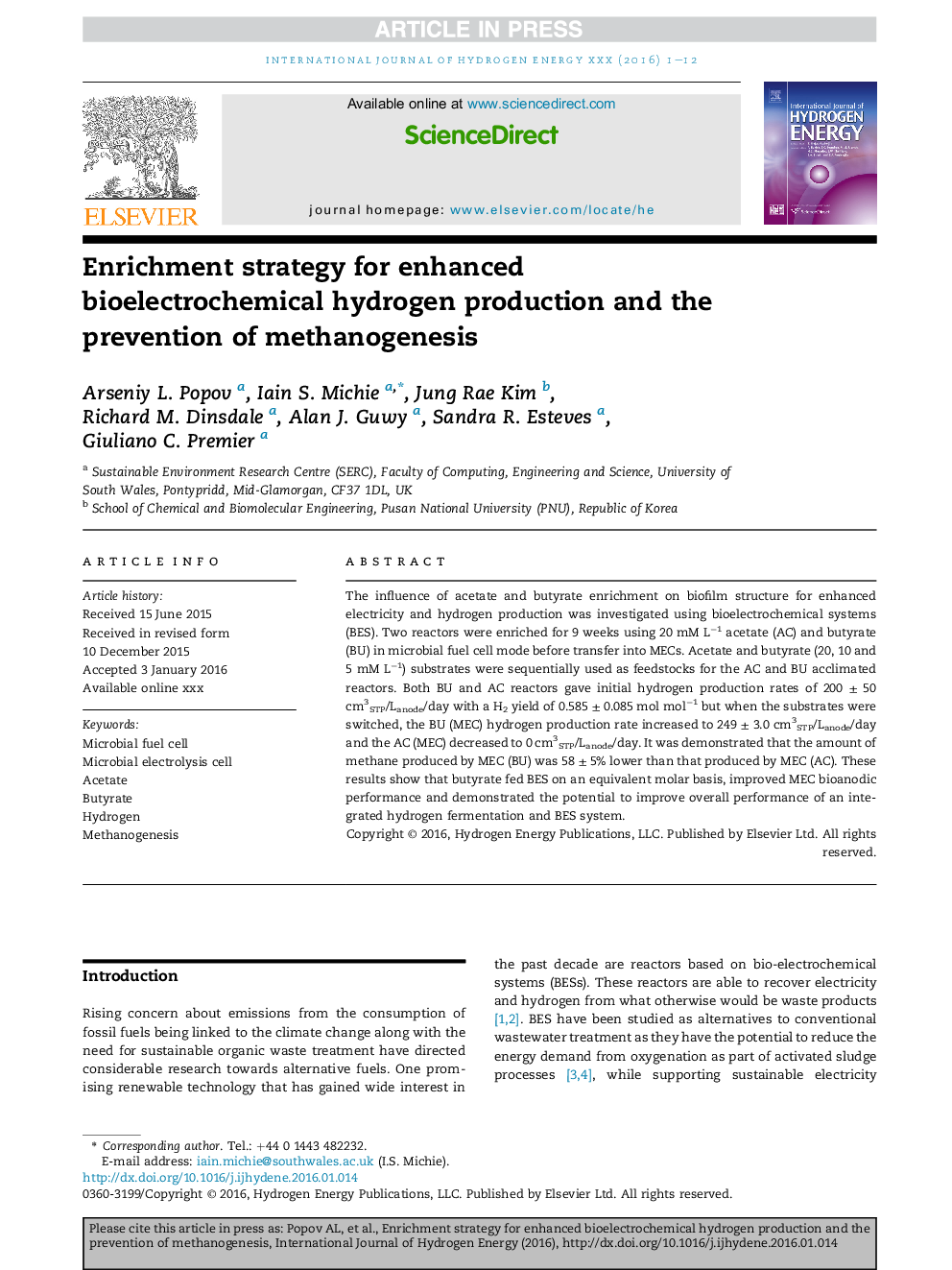| Article ID | Journal | Published Year | Pages | File Type |
|---|---|---|---|---|
| 7711380 | International Journal of Hydrogen Energy | 2016 | 12 Pages |
Abstract
The influence of acetate and butyrate enrichment on biofilm structure for enhanced electricity and hydrogen production was investigated using bioelectrochemical systems (BES). Two reactors were enriched for 9 weeks using 20 mM Lâ1 acetate (AC) and butyrate (BU) in microbial fuel cell mode before transfer into MECs. Acetate and butyrate (20, 10 and 5 mM Lâ1) substrates were sequentially used as feedstocks for the AC and BU acclimated reactors. Both BU and AC reactors gave initial hydrogen production rates of 200 ± 50 cm3STP/Lanode/day with a H2 yield of 0.585 ± 0.085 mol molâ1 but when the substrates were switched, the BU (MEC) hydrogen production rate increased to 249 ± 3.0 cm3STP/Lanode/day and the AC (MEC) decreased to 0 cm3STP/Lanode/day. It was demonstrated that the amount of methane produced by MEC (BU) was 58 ± 5% lower than that produced by MEC (AC). These results show that butyrate fed BES on an equivalent molar basis, improved MEC bioanodic performance and demonstrated the potential to improve overall performance of an integrated hydrogen fermentation and BES system.
Related Topics
Physical Sciences and Engineering
Chemistry
Electrochemistry
Authors
Arseniy L. Popov, Iain S. Michie, Jung Rae Kim, Richard M. Dinsdale, Alan J. Guwy, Sandra R. Esteves, Giuliano C. Premier,
